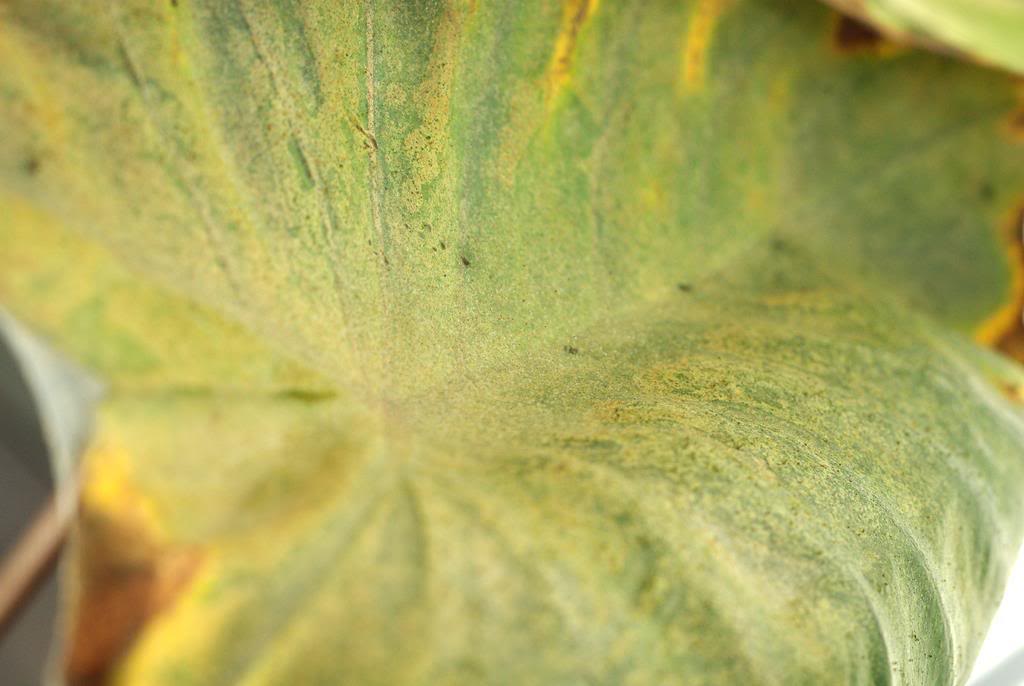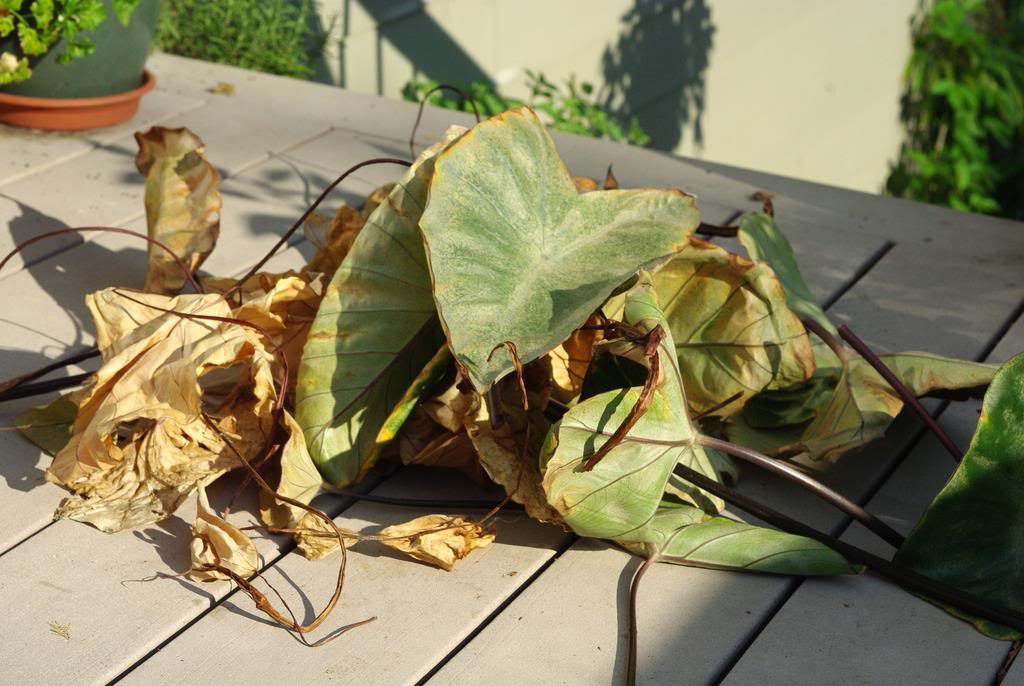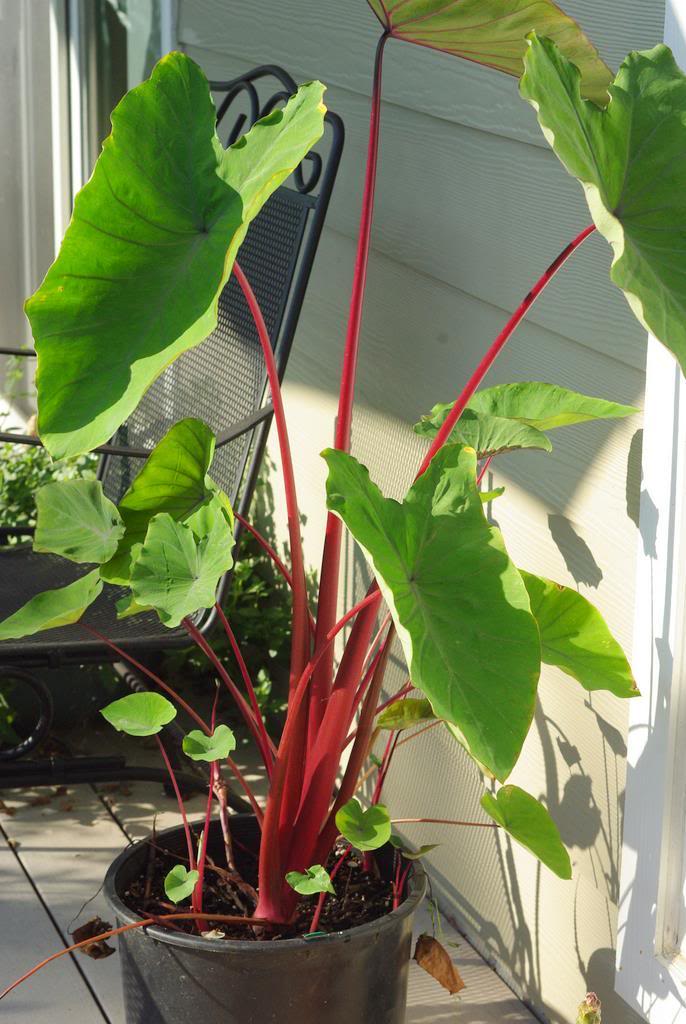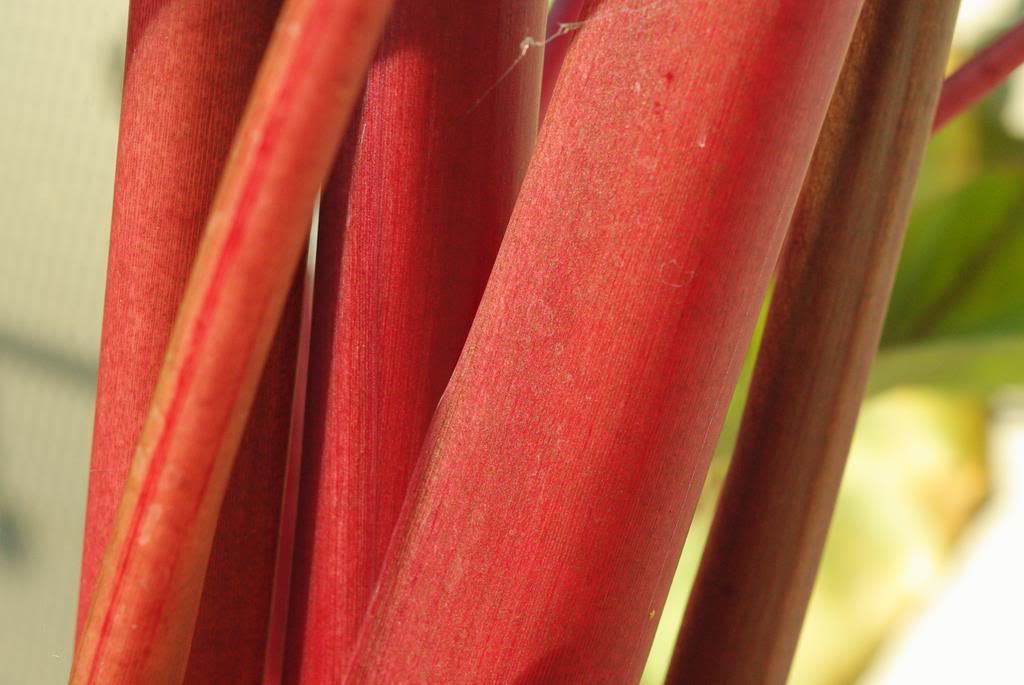If you have pets that have ears, then you may have become familiar with ear mites at one time or another. They're not too difficult to get rid of with some drops, and after a few days of treatment (stop squirming -- these drops will make you feel better!) your cat or dog will be back to normal, rid of the tiny pests that were causing so much itching.
The other day I noticed that the elephant ears plant on my deck -- the one I walk past several times each day but apparently don't really look at -- was infested with spider mites. These mites are a big problem on plants I'm overwintering inside, as they prefer the dry air. Strange to see such a bad case outside in our St. Louis humidity.
As you can see, this is a really severe case. The mites are heavy on both sides of each leaf, sucking the chlorophyll from the leaves:
The feedings leave countless tiny white spots, resulting in an ugly mottled look. Ick.
You can see the webbing that gives these pests their name too:
I've looked at these mites under my microscope before:
Take a look at that post if you're interested.
Enough observation -- it's time to remedy the situation. Since most of the leaves are so heavily damaged, I'm going to remove them -- just cut them right off.
I then sprayed the few new leaves that hadn't been infested too much or damaged yet with insecticidal soap, making sure to wet the tops and bottoms of the leaves, as well as the stems. I'll repeat the spraying in a couple of days.
Since the plant isn't looking its best with only a couple of leaves, I'll move it off the deck and give it a shot of fertilizer to get it producing new leaves as quickly as possible.
Luckily I have an almost endless supply of potted elephant ears that I can move onto the deck to replace it. I chose one not with black stems like the previous one, but one with deep red stems, Colocasia 'Sangria':
I absolutely love the color of these stems, but wish the plant were putting more energy into getting larger instead of producing offsets. Perhaps in its new location it will size up faster. It was shaded by other elephant ears in its old location.
So elephant ear mites: a bit ugly but easy to eradicate in this case.
And no squirming animals to deal with, which is good, because you'd need a lot of ear drops to treat an elephant.
.










I love the Colocasia 'Sangria' - beautiful colouring.
ReplyDelete'Sangria' is really nice. I'm pretty surprised about the spider mites too, since our humidity in St. Louis usually hovers about 90%.
ReplyDeleteAlan, I've never had mites on colocasias but they just about killed a bowl of sempervivums. The onset was very sudden.
ReplyDeleteAnyway, I think you did the right thing. Just keep up with the insecticidal soap.
Love the 'Sangria'.
:: Bamboo and More ::
I'm glad I don't see that stuff in my garden. When I started acquiring bamboos, I've kept new plants in quarantine for a couple months, and sprayed them with miticide until I felt they were mite free no matter where the boo is from. It has worked so far.
ReplyDeleteThe only mite's I've ever seen are the huge spider mites which seem to ignore the bamboos.
Steve: huge spider mites? If they're huge, they're not mites. I wonder what they are?
ReplyDeleteI'm talking about those spider like red bugs that I find on trees, sometimes wood, but I've never seen what I see in your pictures.
ReplyDeleteBTW, the spectabilis plants from you have put out new culms around the 5ft range, and are sending out rhizomes so they are filling out their 15 gallon pots in a hurry.
We have spider mites on one of our water plants - a red dock that went from lush and gorgeous to chewed up and holey overnight. I wonder if you can you use insecticidal soap on water plants without upsetting the balance in your water garden? This is a new endeavor for us so we're learning as we go - sometimes we learn the hard way!
ReplyDeleteSteve: ah, velvet mites. They *are* huge, but don't feed on plants I believe. You find them on the ground mainly.
ReplyDeleteLisa: spider mites won't chew holes in leaves. You have another pest.
Yup. We found the spider that was building the web every morning. We assumed the spider mites were doing it. So she's just there waiting for an easy meal.
ReplyDeleteTiny white bugs - don't fly or even jump much. I'm off to Bug ID!
thank you! just what the garden doctor ordered!
ReplyDelete